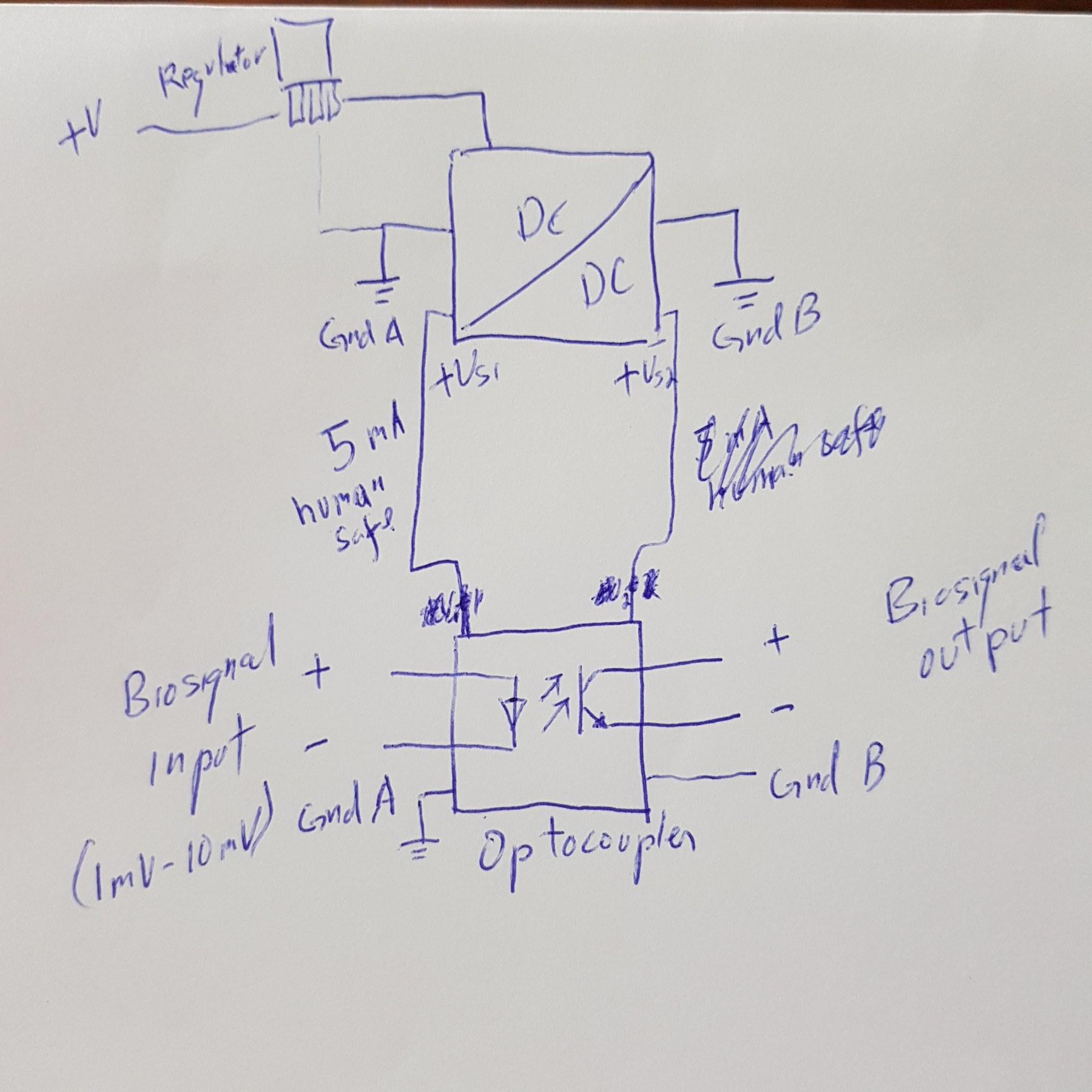
The application is biopotential signal of 1mV to 10mV differential + and - with common (or ground), one channel only. The optocoupler will move the biosignal across the isolation barrier, and the DC-DC converter is needed to provide power for the isolated side while maintaining the isolation. The DC current of the input circuit of the optocoupler must be 5mA or human safe so in the event the optocoupler has fault and the isolation is broken, huge DC current from device (battery operated) wouldn't get into the skin (which is abraded so resistance is not very high).
The biosignal output must be similar to the input with no gain , no distortion and noises introduced. What optocoupler, DC-DC converter can be used for this purpose? Frequency range can be 2500Hz, doesn't have to be 20000Hz. What is the frequency response of a typical optocoupler?
Since the application can be used in any input in any generic device. Isn't there any finished product like it?